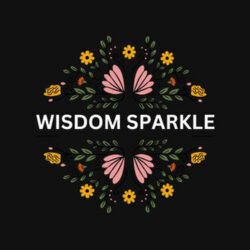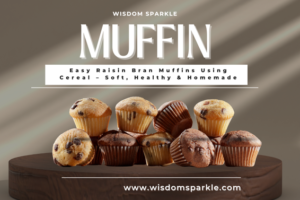
Have you ever asked yourself –
“Am I really fit, or am I just physically active?”
It’s a simple question, but it’s one that most people don’t stop to think about. You might go for walks every morning, take the stairs instead of the lift, or even hit the gym a few times a week. Maybe you dance, play sports, or follow YouTube workout videos at home. And that’s great — it means you’re active.
But does that automatically mean you’re fit?
Here’s the truth — being active and being truly fit are not the same thing.
Even if you’re active, your muscles might still be weak.
You can be busy moving all day and still lack flexibility.
You may even exercise often but tire quickly or struggle with balance.
Fitness is more than just moving your body or sweating during workouts.
It’s about how well your body performs in different areas – strength, stamina, flexibility, muscle endurance, and body balance. These are called the 5 components of physical fitness, and they all work together to build a strong, healthy, and well-functioning body.
In this blog, we’re going to break down those 5 real components in a way that’s super simple and easy to understand — no confusing terms, no complex theories, just plain, useful information that you can apply to your daily life.
Because once you understand these components, you’ll know exactly what your body needs to be not just active, but truly fit – inside and out.
🌟 The 5 Components of Physical Fitness
1. Cardiovascular Endurance (Heart and Lung Strength)
What it means:
Cardiovascular endurance is how well your heart and lungs can supply oxygen to your muscles during long periods of activity.
In simple words:
How long can you walk, run, or cycle without feeling too tired or out of breath?
Examples:
- Brisk walking for 30+ minutes
- Jogging, swimming, cycling
- Dancing or aerobics
Why it’s important:
- Keeps your heart healthy
- Improves blood circulation
- Builds stamina and energy
- Helps with weight control
How to improve:
- Do 20–30 minutes of cardio exercises 3–5 times a week
- Try jump rope, Zumba, or climbing stairs
2. Muscular Strength (Power of Your Muscles)
What it means:
Muscular strength is how much force your muscles can use to lift, push, or carry something heavy.
In simple words:
How strong are you? Can you lift your grocery bags easily? Can you carry your kid?
Examples:
- Lifting weights
- Push-ups, squats
- Carrying heavy objects
Why it’s important:
- Helps with daily tasks
- Prevents injuries
- Strengthens bones and joints
- Boosts metabolism
How to improve:
- Begin with exercises that use your own body weight, like push-ups or planks.
- Use resistance bands or light dumbbells
- Gradually increase the weight or resistance
3. Muscular Endurance (Muscle Stamina)
What it means:
Sure! Here’s a simpler version:
Muscular endurance means how long your muscles can keep working before they get tired.
In simple words:
Can you stay in a plank for 30 seconds without your body shaking or dropping? Can you climb multiple flights of stairs?
Examples:
- Holding a squat
- Doing multiple reps of sit-ups or lunges
- Yoga poses like downward dog or warrior
Why it’s important:
- Increases energy levels
- Supports good posture
- Helps in sports or active jobs
- Keeps muscles toned and active
How to improve:
- Do circuits of bodyweight exercises
- Increase the number of reps, not just weight
- Include yoga or pilates in your routine
4. Flexibility (Freedom to Move)
What it means:
Flexibility means how easily and smoothly your muscles and joints can move without feeling tight or painful.
In simple words:
Can you bend to touch your toes? Can you stretch your arms overhead without strain?
Examples:
- Stretching exercises
- Yoga or Pilates
- Tai Chi or warm-up routines
Why it’s important:
- Prevents muscle injuries
- Improves movement and balance
- Reduces body pain and stiffness
- Helps with daily activities like bending or twisting
How to improve:
- Stretch daily after your workouts
- Hold each stretch for 15–30 seconds
- Join a beginner yoga class
5. Body Composition (Fat vs Muscle Ratio)
What it means:
Body composition refers to the amount of fat, muscle, water, and bone in your body.
In simple words:
It’s not only about how much you weigh – it’s about what your weight is made of.
Examples:
- Two people can weigh the same but look very different based on muscle and fat levels.
Why it’s important:
- Shows how healthy and balanced your body really is
- High muscle + low fat = healthier and fitter
- Helps reduce risk of lifestyle diseases
How to improve:
- Eat a balanced diet
- Combine cardio + strength training
- Track progress by how clothes fit, not just weight scale
🔄 How They All Work Together
You might be great at cardio but lack strength. Or you might lift weights but feel stiff and tight.
To be truly fit, you need to balance all five components.
Just being active isn’t enough.
Here’s a quick example:
|
Activity |
Active Person |
Fit Person |
|
Walks daily |
✅ |
✅ |
|
Lifts weights |
❌ |
✅ |
|
Can hold a plank |
❌ |
✅ |
|
Can stretch fully |
❌ |
✅ |
|
Has balanced body |
❌ |
✅ |
Being fit is about overall health – not just one part of it.
💡 Quick Tips to Get Truly Fit
So now that you know what real fitness includes — not just cardio or lifting weights but also flexibility, muscular endurance, and body composition — the next step is this:
👉 How do you apply all of this in daily life?
The answer is: keep it simple, balanced, and consistent.
You don’t need to work out like a pro or spend long hours in the gym. Even small, mindful actions done regularly can bring huge changes.
Treat each week like a small fitness journey for your body. Each day, try to touch at least one of the five components — mix it up to avoid boredom and to train your full body over time.
Here’s a sample weekly routine that fits into a busy life and still covers all the essential areas:
✅ Monday – Cardio + Flexibility
Go for a 30-minute brisk walk or light jog, followed by 10 minutes of full-body stretching. It’s a great start to the week and wakes up the body gently.
✅ Tuesday – Strength Training
Use your body weight (push-ups, squats, lunges) or light dumbbells. Focus on arms, legs, and core. Just 20 minutes a day can help you build strength.
✅ Wednesday – Flexibility Focus
Try yoga, deep stretching, or Pilates. This keeps your muscles long and loose. It also calms your mind midweek.
✅ Thursday – High-Intensity Cardio
Do 20–30 minutes of fast-paced movement like jump rope, cycling, dance cardio, or a HIIT session. This boosts your heart health and burns calories.
✅ Friday – Endurance + Stamina
Do a bodyweight circuit — like 3 rounds of squats, push-ups, planks, jumping jacks, and lunges. Build that muscle stamina!
✅ Saturday – Fun & Play
Pick a sport, go for a hike, join a dance class, or just play outside with your kids or pets. Fitness should feel good — find ways to enjoy the movement.
✅ Sunday – Active Recovery
Go for a slow walk, stretch your body gently, do deep breathing. Let your muscles recover and prepare for the next week.
🌿 Remember:
You don’t need to be perfect.
You don’t need to exercise for hours every day to get results.
You just need to move your body with intention — and mix in all 5 components slowly and naturally through your week.
Even 15–30 minutes a day can create real results if done consistently.
🍎 Bonus: Nutrition, Sleep & Mental Health Also Matter
Fitness is not just about workouts.
Your body also needs the right fuel, proper rest, and a calm mind to grow stronger and healthier. Think of it like this: your workouts are the “effort,” but what you do outside of the workout is what helps you recover and improve.
🥦 1. Healthy Food = Healthy Muscles
- Eat more colorful fruits and vegetables
- Choose whole grains like brown rice, whole wheat roti, or oats.
- Add protein – dal, eggs, tofu, nuts, lean meats
- Avoid too much sugar, fried snacks, and junk food
💧 2. Water is Your Best Friend
- Make an effort to consume six to eight glasses of water each day.
- Start your day with a slice of lemon and some warm water.
- To ensure you don’t forget to drink, carry a bottle of water with you.
😴 3. Sleep is When Your Body Repairs
- Every night, aim for 7 to 8 hours of sleep.
- Avoid screens at bedtime
- Before going to bed, try some calming exercises like reading or deep breathing.
🧘♀️ 4. Mental Health is Part of Fitness Too
- Don’t ignore stress, anxiety, or overthinking
- Take 5–10 minutes a day to just sit quietly
- Journal your thoughts, listen to calming music, or practice gratitude
- Talk to someone if you feel low — asking for help is also strength
✅ Final Thoughts
So, are you fit or just active?
If you’re only focusing on one part (like walking or lifting weights), you’re just scratching the surface.
To become truly fit, you need to:
- Build endurance
- Gain strength
- Improve flexibility
- Boost muscular stamina
- Balance your body composition
Start small. Be regular. Don’t rush.
Fitness is a journey – and you’re already on the right path just by reading this.
📝 Summary Table
|
Component |
What It Means |
Simple Example |
|
Cardiovascular Endurance |
Heart and lung stamina |
Brisk walking, swimming |
|
Muscular Strength |
Muscle power |
Lifting weights, push-ups |
|
Muscular Endurance |
Muscle stamina |
Reps of squats, planks |
|
Flexibility |
Range of motion |
Yoga, stretching |
|
Body Composition |
Muscle-to-fat ratio |
Balanced diet + full workouts |
If you found this guide helpful, feel free to bookmark it or share it with a friend who’s on their fitness journey too!







